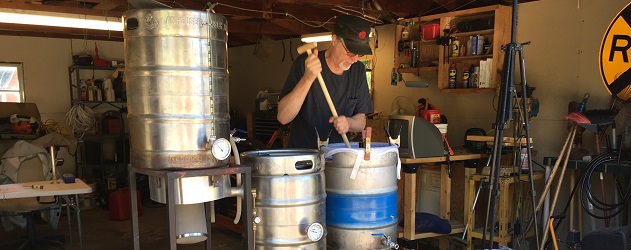Tomorrow is brew day. Version 1.1 of the 1880 Whitbread Porter. Normally I would like to have had my yeast starter started two days before brew day but I had read about a technique called Shaken, Not Stirred for making yeast starters and decided to give it a try.
My normal starter routine is to calculate how much cell growth I need for a given beer's OG and then make a starter of the recommended size. Full disclosure... I don't make the calculations, I use the starter tool in Beersmith 3. The SNS method however says forget cell count and concentrate on pitching healthy cells that are ready to go to war. Those being the words of the man who pioneered this method.
That person is Mark Van Ditta, AKA yeastwhisperer, AKA S. Cerevisiae on the
American HomeBrewers Association forum. Mark's research has shown him that pitching a smaller amount of robust yeast who are, again as he puts it, ready to go to war is much more advantageous than pitching a large amount of tired yeast cells that are more inclined to take a nap than storm the beaches.
A link to Marks in depth explanation follows but here is my synopsis and the steps I took just this afternoon.
The idea is to prepare a starter as usual. The size of the vessel you use must be four times the volume of the starter medium. Here is where SNS takes a left turn; instead of using a stir plate you shake the the starter medium for a minute or two to fill the vessel with as much foam as possible hence the name. Also, instead of a couple of days sitting on the stir plate you will pitch the yeast at high krausen, usually within 12 to 18 hours.
 |
| After shaking for 1 minute |
My Steps:
1. Gather all the equipment needed
- 1 Gallon jug with cap. The cap is necessary during the shaking
- A little more than a quart of water (enough extra to account for boil off)
- 3 to 4 ounces of DME
- Funnel
- Scissors
- Airlock
- Yeast
- Sanitizer
2. Prepare and boil starter wort for 15 minutes; chill when compete
3. While chilling; wash and sanitize jug, funnel, and other equipment
3. When starter medium has chilled transfer it to the cleaned and sanitized vessel
4. Cap jug and shake for at least one minute.
5. Let starter medium rest in the capped vessel for 15 minutes
6. Sanitize scissors and yeast package, open package and pitch into starter vessel
7. Pitch starter medium into fermenter at high krausen.
For the last word on the Shaken, Not Stirred method read what Mark wrote back in 2015.
Don't miss my brew day update coming soon.









